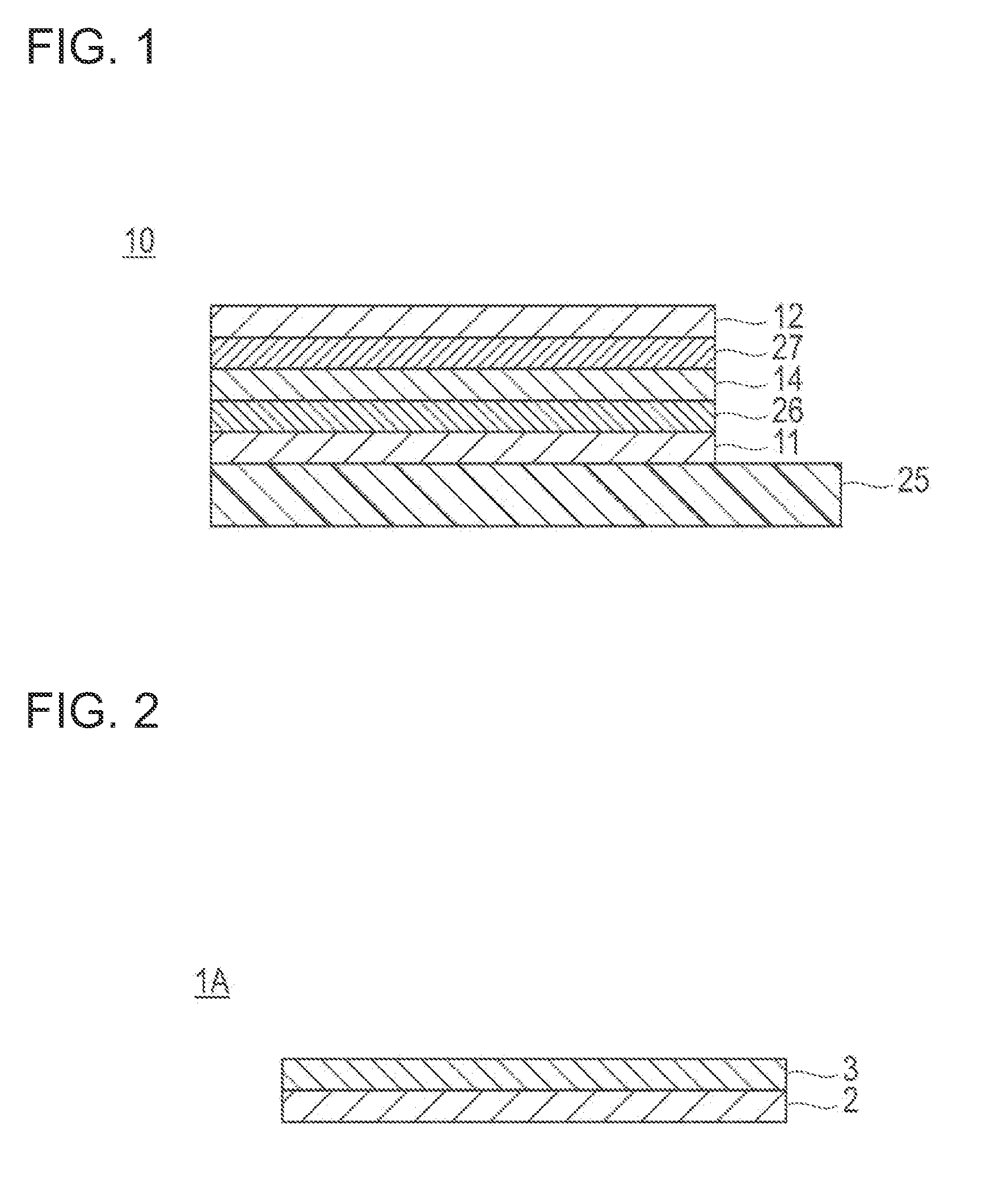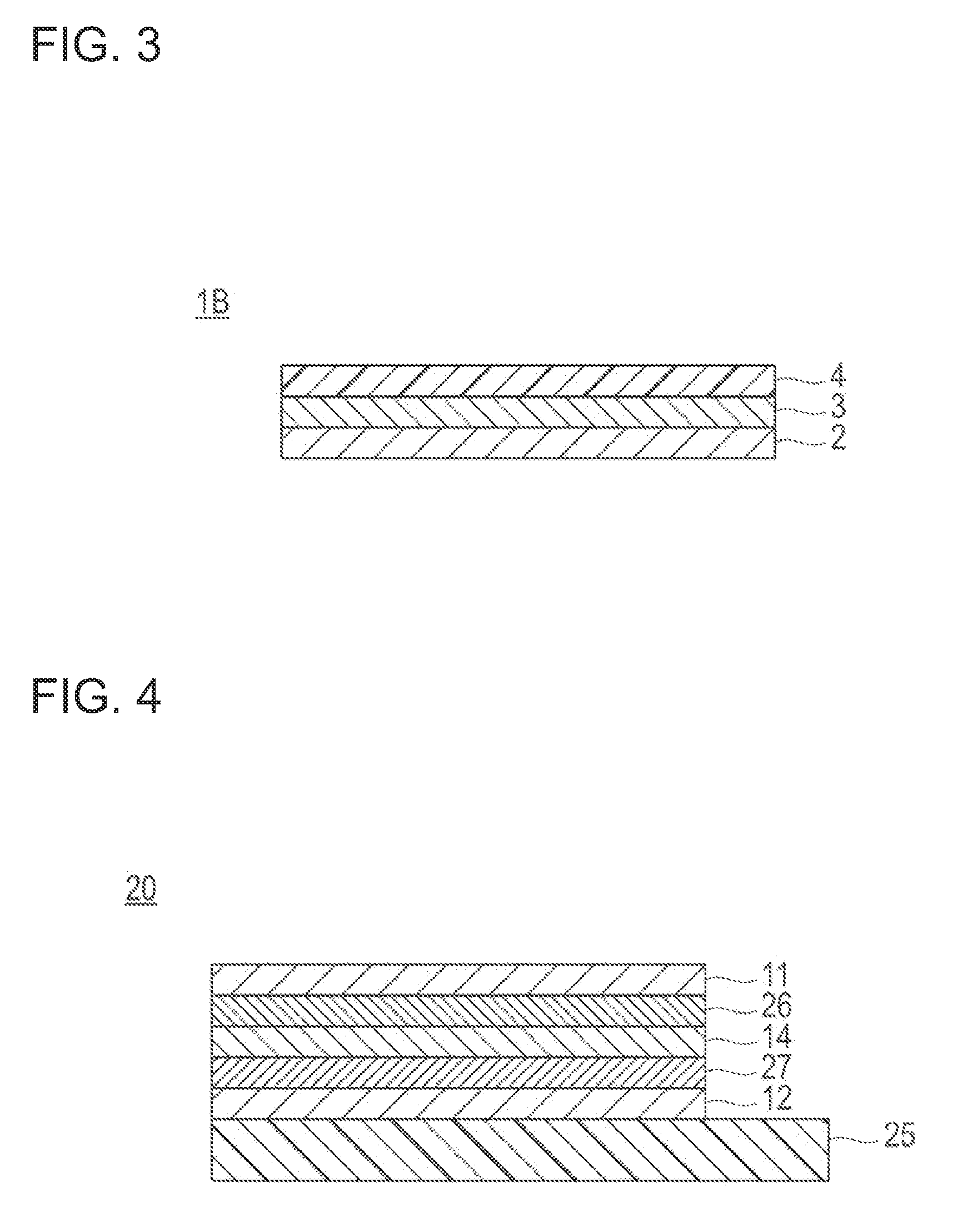Organic photoelectric conversion element and solar cell using the same
a photoelectric conversion element and solar cell technology, applied in the direction of instruments, final product manufacturing, sustainable manufacturing/processing, etc., to achieve the effects of high transparency, sufficient photoelectric conversion efficiency and durability, and improved conductivity
- Summary
- Abstract
- Description
- Claims
- Application Information
AI Technical Summary
Benefits of technology
Problems solved by technology
Method used
Image
Examples
preparation example 1
Synthesis of Exemplified Compound 1
[0316]
[0317]Exemplified Compound 1 above was synthesized by referring to Japanese Patent Application Laid-Open No. 2010-235575.
[0318]Under a stream of nitrogen, 460 mg (1.4 mmol) of 1,3-diiodobenzene (manufactured by Sigma-Aldrich Co. LLC.) and 470 mg (2.8 mmol) of Exemplified Compound 1-1 (synthesized by referring to Japanese Patent Application Laid-Open No. 2010-235575) were added to 15 ml of DMSO and 0.89 g (4.2 mmol) of potassium phosphate and stirred for 10 minutes. To the resultant, 53 mg (0.28 mmol) of CuI and 6-methyl picolinic acid (0.56 mmol) were added and heated at 125° C. for 7 hours. Under cooling with water, 5 ml of water was added thereto and stirred for 1 hour. The precipitated crude product was filtered, further subjected to the column purification, and then recrystallized with o-dichlorobenzene / acetonitrile so as to obtain 470 mg (yield of 82%) of Exemplified Compound 1.
preparation example 2
Synthesis of Exemplified Compound 10
[0319]Exemplified Compound 10 above was synthesized by referring to Japanese Patent Application Laid-Open No. 2008-69122.
preparation example 3
Synthesis of Exemplified Compound 13
[0320]The following Exemplified Compound 13 was synthesized by referring to paragraphs [0038] to [0040] of Japanese Patent Application Laid-Open No. 2010-235575.
PUM
| Property | Measurement | Unit |
|---|---|---|
| Thickness | aaaaa | aaaaa |
| Thickness | aaaaa | aaaaa |
| Nanoscale particle size | aaaaa | aaaaa |
Abstract
Description
Claims
Application Information
 Login to View More
Login to View More - R&D
- Intellectual Property
- Life Sciences
- Materials
- Tech Scout
- Unparalleled Data Quality
- Higher Quality Content
- 60% Fewer Hallucinations
Browse by: Latest US Patents, China's latest patents, Technical Efficacy Thesaurus, Application Domain, Technology Topic, Popular Technical Reports.
© 2025 PatSnap. All rights reserved.Legal|Privacy policy|Modern Slavery Act Transparency Statement|Sitemap|About US| Contact US: help@patsnap.com



